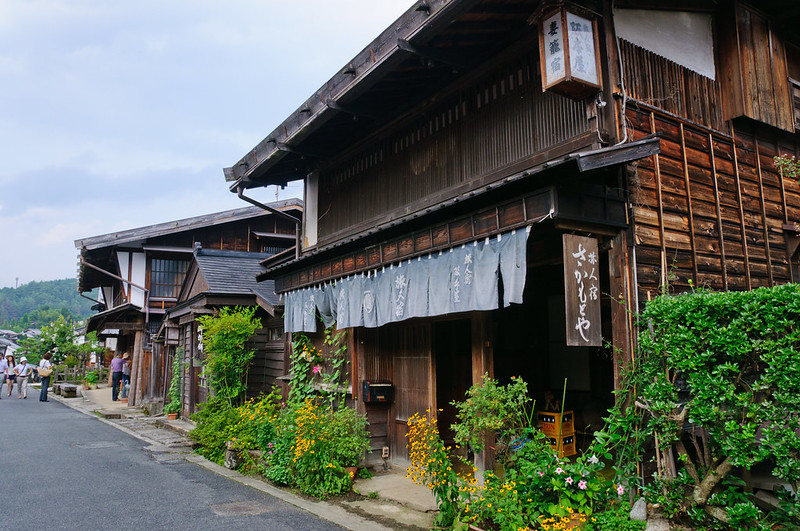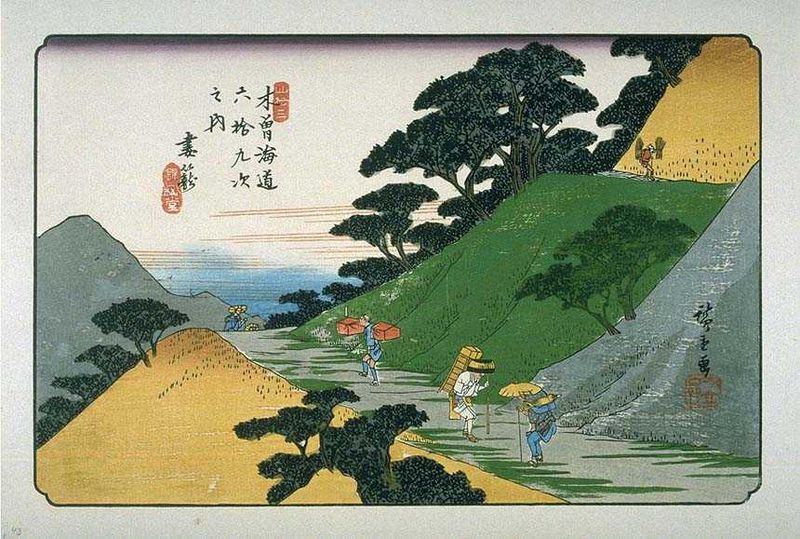
The Historic Town of Tsumago-juku
Tsumago-juku (妻籠宿) in Nagiso, Kiso District, Nagano Prefecture in Japan, is seemingly untouched by time. The quiet town has been restored to its original appearance since the Edo Period, some 300 years ago. Walking along Tsumago-juku’s quiet streets takes you back to a time long gone and allows you to experience the rich traditions and culture of Japan.
Tsumago-juku
Tsumago-juku was further immortalized by the famous words penned by Toson Shimazaki, one of Japan’s leading modern literature writers, with the phrase “The entire Kisoji is in the mountains,” referring to the picturesque Tomago and Magome post stations along the Nakasendō route.

Tsumago on the Kisokaido, ukiyo-e prints by Hiroshige.
Post stations or rest post towns were conveniently located along the trade routes and were sanctioned by the Japanese government for amenities like horse stables and places for food and lodging. Tsumago-juku was 42nd out of the 69 post towns that connected Edo (present-day Tokyo) with Kyoto along the Nakasendō, an alternate trade route from the Tōkaidō road. Before being part of the Nakasendō, it had already been one of the eleven stations along the minor trade route Kisoji that ran through the Kiso Valley. This made Tsumago-juku a relatively prosperous and urbane town. However, after the completion of the Chūō Main Line, the town fell into poverty and obscurity, as the Main Line bypassed Tsumago-juku.
Nakasendo Trail, Tsumago juku.
In 1968, through the efforts of local residents, the restoration of historical sites and structures began. By 1971, there were already about 20 houses restored and a charter by the Japanese government that stipulated that no place in Tsumago should be “sold, hired out, or destroyed.” In 1976,Tsumago-juku was designated as a Nationally-designated Architectural Preservation Site.
Also, check out KCP Summer Short Term 2012 in their Nagano excursion.
